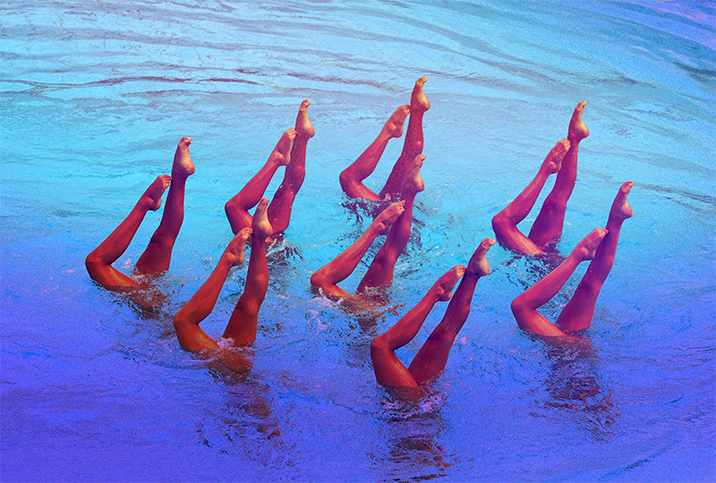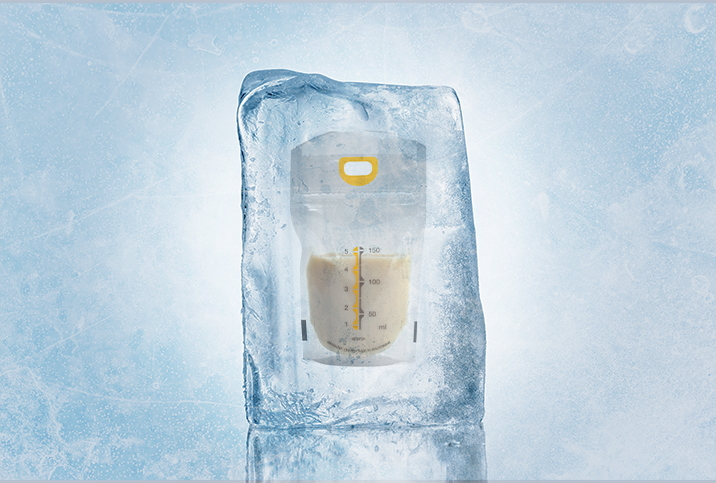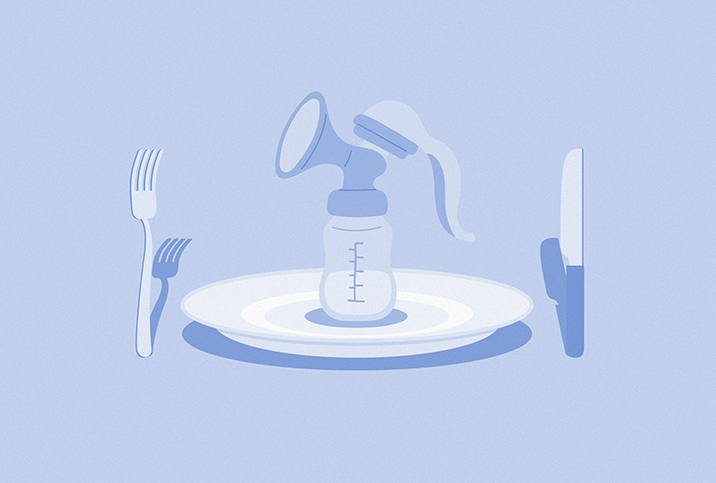Does Breast Milk Have Healing Properties?

Babies have been fed breast milk since the dawn of humanity and there has been plenty of research on its immunological properties, but this magic cocktail may have many more uses.
Its nutrient-rich properties can sustain a baby for their first months of life, with known benefits such as protection from respiratory disease, ear infections and gastrointestinal problems during this time.
While these properties may be impressive alone, breastfeeding can also offer lifelong protection against diabetes, obesity, hyperlipidemia, hypertension, cardiovascular disease, autoimmune conditions and asthma.
What are the potential healing benefits of breast milk?
A 2019 systematic review looked into reports by public health nurses that both colostrum (the gold-colored liquid that is produced before milk) and breast milk can be used to treat conjunctivitis (eye infection), chapped nipples and rhinitis (allergic and nonallergic irritation of the nose) as well as skin and soft tissue infections. Researchers noted that "many human milk components have shown promise in preclinical studies and are undergoing active clinical evaluation."
Milk therapy is the term for applying breast milk to the body as a therapeutic remedy, as opposed to its primary use as nutritional feeding for young children.
Historically, breast milk has been used as medicine for everyone, both old and young, dating back to the 17th and 18th centuries in both the United Kingdom and the United States. It was used for all sorts of ailments, including consumption, loss of appetite, fainting, hysteria and earache, but a big purpose back then was for eye problems.
A 2015 study in the American Journal of Nursing Science found breast milk applied to the remainder of the umbilical cord constitutes cheap and easy cord care. The properties of breast milk reduce the time it takes for the cord to separate from the baby and drop off.
Does breast milk have healing properties?
One small study found human milk had no effect when applied to eczema on the skin. In the case of mild diaper dermatitis, an Iranian report found breast milk to have a positive effect after five days, whereas in a U.S. study, barrier cream was found to be better than milk in moderate to severe cases of dermatitis.
Jessica Madden, M.D., an international board-certified lactation consultant (IBCLC), a board-certified pediatrician and a neonatologist in Cleveland and the medical director at Aeroflow Breastpumps, explained why human milk can have these effects.
"Breast milk can help to heal wounds because it contains many immune components, including antibodies, white blood cells and lactoferrin," Madden said.
Studies indicate lactoferrin can be an important supplementary treatment to help counteract COVID-19 infections.
Abrie McCoy, a board-certified lactation consultant with SimpliFed who is based in North Carolina, added that breast milk also contains probiotic bacteria, epidermal growth factor and erythropoietin as well as everything your baby requires from a nutritional standpoint.
Erythropoietin is a compound that may help with growing and repairing skin cells because it stimulates the production of red blood cells, explained Morgan Michalowski, C.N.M., an IBCLC, a women's health nurse practitioner and board-certified lactation consultant at Clue who is based in New York City. She added that the composition of breast milk means there is no risk of allergy.
It has also been proved that breast milk contains its own unique microbiome, and a 2020 study stated that these beneficial bacteria and their effect, especially on infant health, should be explored further.
Why does breast milk potentially help heal minor skin wounds?
It isn't surprising then that breast milk has long been used for its healing properties. McCoy said it is commonly used around the world for many skin irritations.
One of its most famous uses is on the breasts themselves as a salve for healing nipples that may have been damaged by breastfeeding. A shortened healing time compared with the application of lanolin balm was found in an Iranian study.
She agreed that breastmilk application could help for a few days, but if the irritation persists for longer than five days, seek advice from a certified lactation consultant because breastfeeding should not hurt or cause damage, McCoy said.
However, there are more possibilities to be explored in order to prove milk therapy is effective, Michalowski said. She explained that human milk can be used for personalized medicine, which is defined as medicine that is specifically designed for someone based on their genetic makeup. A tailored treatment like this is not only more effective but also causes fewer side effects.
"We do know that breast milk is safe for people and contains substances that may help the body to grow and repair itself," Michalowski said.
The scientific researchers who conducted the 2019 review echo her viewpoint.
"Due to its low cost, wide availability and lack of undesirable effects, mothers' milk has the potential to play a role in human health and in evidence-based therapy," they wrote.


















